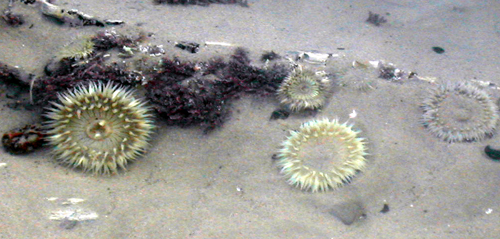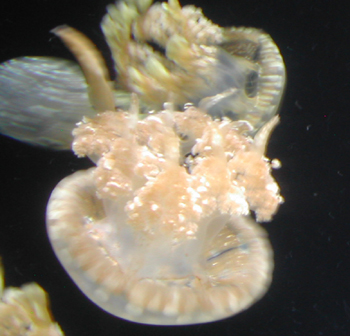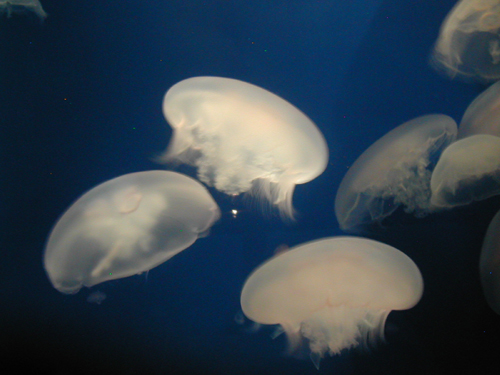After a longer than anticipated delay, here are the answers to the circus animal poop identification challenge from back in August.
While there are some handy flowcharts and poop identification picture on the web, I haven’t yet found such a guide for African or Asian wildlife. Since many, if not most, of the high traffic circus animals are from those two continents, that leaves me with rationales for the pictured poop that are a little more hand-wave-y than I’d like. Animal poop experts who would like to give us more information about why these particular animals poop the way they do are cordially invited to hold forth in the comments!
Category Archives: Critters
Friday Sprog Blogging: dramatic developments in gene splicing.
The Free-Ride offspring are currently engrossed in a “creative dramatics” workshop, wherein they are learning all sorts of things about acting, characterization, costuming, and related matters in order to write, rehearse, stage, and perform a play. My kids are show people! Except that somehow, even when they’re being show people, the science wheels in their heads are still turning …
Younger offspring: We did an exercise where each group came up with a scene about one of the four food groups.
Elder offspring: My group did “dairy”. I was a brown cow who needed milking.
Younger offspring: My group did “meat”.
Dr. Free-Ride: And you a vegetarian! What were you in the scene?
Younger offspring: I was a cow that was used to make the cow-chicken.
Dr. Free-Ride: Say what?
Elder offspring: A cow-chicken. Half chicken, half cow.
Friday Sprog Cephalopod
Sometimes a kid grabs the colored pencils and ends up with a picture of an octopus.

Judging by its color, the octopus is not angry.
This unsolicited picture may be foreshadowing. Younger offspring recently got a chapter book about giant squids and may be working up to dictating a review of it. Maybe next Friday.
Anemones.
On that beach walk the other day on which we saw the various shorebirds, we also got a peek at some tidepool inhabitants, notably anemones.

Eleven (sand)pipers (sand)piping.
My better half and I were able to join friends on a beach walk yesterday. We hiked a little more than five miles from Goleta to Santa Barbara, and along the way we saw at least eleven sandpipers.

At least, I think the birds we saw were sandpipers. Perhaps those of you who are birders can help with the identifications.
Not a creature was stirring
Given the available options, would you be stirring?
You could, after all, be sunbathing on the beach.

Of course, you might have to haul yourself out of the waves every now and again.

Spotted jellies.

Here are some more jelly pictures from my most recent visit to the Monterey Bay Aquarium. Today, the Spotted jelly (Mastigias papua).
I really like the coloration of these critters, as well as the way that they swim together in patterns that look like a complicated water ballet.
According to the Monterey Bay Aquarium Online Field Guide, those coffee-with-cream colored spots are due to tiny algae called zooxanthellae growing in the jellies. The algae aren’t just cosmetic — they also produce nutrients that feed the jellies, supplementing their zooplankton diet.
Caroling mice: words of advice.
Today I stumbled upon a story the elder Free-Ride offspring wrote. Possibly intended to strike a Charles Dickens-like tone, I think it ended up a bit closer to Dostoevsky.
Of course, I have to share it:

When Mice Go Caroling
Moon jellies.

There are lots of cool things to see at the Monterey Bay Aquarium, but my favorite by a fathom is the assortment of jellyfish. And somehow, among all the jellies they have, it’s the moon jelly that sticks in my mind as the canonical jelly.
As it turns out, probably it shouldn’t. According to the Monterey Bay Aquarium Online Field Guide, the moon jelly (Aurelia labiata) is somewhat unusual in having a fringe of cilia around its bell to sweep in the food. (Other jellies get the job done with dangling tentacles.)
Hungry flowers.

On a recent trip to the Monterey Bay Aquarium I snapped this picture of an underwater garden of the sort you might find in mangrove forests and shallow lagoons along tropical coasts.
